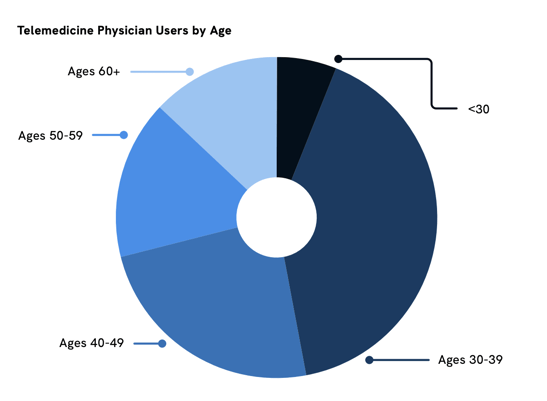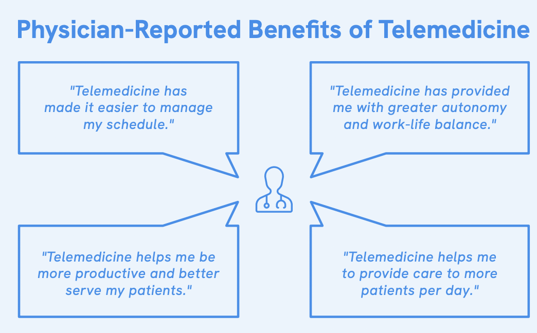 Telemedicine is poised to maintain a pivotal role in health care delivery, according to Doximity’s 2023 State of Telemedicine Report. Our recently released annual report examines the continued adoption of telemedicine, its applications across various specialties and health care services, and its effects on physician well-being, patient access, and continuity of care.
Telemedicine is poised to maintain a pivotal role in health care delivery, according to Doximity’s 2023 State of Telemedicine Report. Our recently released annual report examines the continued adoption of telemedicine, its applications across various specialties and health care services, and its effects on physician well-being, patient access, and continuity of care.
This year, study findings show that 88% of physicians surveyed believe telemedicine has increased patient access to health care, with many reporting reduced wait times, improved adherence to treatment plans, and decreased no-show rates.
Here are some key takeaways for physician recruiters:
- An analysis of Doximity’s physician telemedicine use showed high adoption rates across all regions of the U.S. in 2022. The highest overall adoption of telemedicine among physicians was in New York City, followed by Chicago and Boston.
- Telemedicine adoption remained strong across all physician age groups in 2022, beginning with training and extending up to retirement.

- Physicians in specialties that manage a significant number of patients with chronic illnesses continue to show some of the highest adoption rates. This trend may be attributed to telemedicine’s ability to promote continuity of care and long-term patient-physician relationships. Here are the top 15 specialties by telemedicine adoption rate:
-
- Endocrinology
- Urology
- Gastroenterology
- Rheumatology
- Neurology
- Otolaryngology (ENT)
- Nephrology
- Cardiology
- Dermatology
- Pulmonology
- Internal Medicine
- Allergy & Immunology
- Family Medicine
- Hematology/Oncology
- Psychiatry
-
- Many physicians have incorporated telemedicine into their regular practices. Among over 1,200 physician telemedicine users surveyed, nearly 84% reported using telemedicine at least weekly, with 40% incorporating it into their daily clinical practice. The highest reports of everyday use were among psychiatrists at 84%, followed by endocrinologists at 57%.
- Physicians are embracing multiple telemedicine modalities, with video emerging as the most predominant among those surveyed. Audio-only phone visits are also widely employed, demonstrating the need for telemedicine tools that are versatile and adaptable to patients’ needs.
- Time management could help explain the continued adoption of telemedicine. According to the report, two-thirds of all physicians surveyed (66%) reported at least one time management benefit, such as greater autonomy and work-life balance, increased productivity, and/or easier schedule management. The majority of physicians surveyed reported telemedicine has improved their ability to manage their schedules.

- Approximately 61% of physicians surveyed also said telemedicine has reduced their patient no-show rates, likely due to the increased convenience, accessibility, and flexibility of virtual care visits.
- Patient access to healthcare also appears to be a leading contributor to telemedicine adoption. An impressive 87% of physicians reported telemedicine has enabled them to provide care to patients who face obstacles visiting their office in person, while nearly 44% said telemedicine has actually reduced wait times for their patients.
- Ensuring patient access to telemedicine is critical for successful implementation. In the Doximity report, approximately 92% of physicians identified ease of use as a key factor in promoting patient access, followed by cross-device compatibility, allowing access from desktop and mobile devices.
- Policy issues can also impact patient access to telemedicine services. Over 78% of physicians surveyed believe there should be pay parity between telemedicine and in-person visits, and nearly 84% said the ability to practice telemedicine across state lines is critical to improving patient access to specialists and other timely care.
Expanding access to health care via telemedicine is critical, and it may also increase patients’ willingness to seek medical attention. In addition to physicians, our report tracks patient perceptions and their adoption of telemedicine. We invite you to read Doximity’s 2023 State of Telemedicine Report now.

